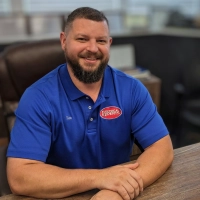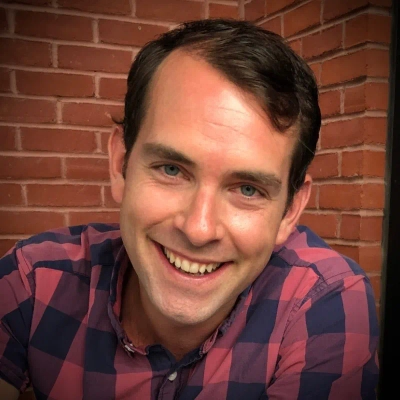25 Unconventional Leadership Techniques That Work for Small Businesses
Discover 25 proven yet unconventional leadership approaches that have transformed small businesses, featuring insights from successful entrepreneurs and business experts across multiple industries. These practical techniques challenge traditional management wisdom while offering accessible strategies that any small business owner can implement immediately. From fostering team engagement through credit-sharing to building transparent decision processes, these methods address the unique challenges small businesses face in today's competitive environment.
Share Credit to Foster Team Engagement
Many small business leaders think they need to be the face of everything. They take credit for every win, thinking that employees and colleagues will admire them for it. Nothing could be further from the truth. Be unconventional and share credit wherever you can. When an employee goes above and beyond, give them the spotlight in a public setting. When you share power and prestige with others, they'll naturally want to reciprocate, and that often means a more engaged team that drives more revenue.

Pause Projects to Prioritize Quality Over Deadlines
One unconventional technique I've used is letting team members "pause" a project midstream if they can explain why it's not working. At What Kind of Bug Is This, we publish a lot of content, and early on, I noticed that when something wasn't clicking—maybe the angle felt off or the data wasn't strong—people would still push it to the finish line just to stay on schedule.
So I flipped the script: if someone flags a project for a pause and suggests a better way forward, we treat that as a win, not a delay. It's been effective because it gives the team ownership, reduces burnout, and leads to sharper, more useful content. Deadlines matter—but clarity and quality matter more in the long run.
Red Team Fridays Build Truth as Habit
One unconventional leadership technique that worked surprisingly well in my business was introducing what we called "Red Team Fridays." Most companies run team meetings to share updates and progress. We did the opposite. Once a week, one project or strategy would go under the microscope—not to celebrate it, but to challenge it. A rotating team was invited to poke holes in assumptions, question risks, and surface blind spots before they became costly.
It sounds brutal, but it changed everything.
We didn't do it to create negativity—we did it to build truth as a team habit. In small businesses, bias kills speed. When people are too close to their own ideas, they defend them instead of improving them. Red Team Fridays made critique safe and useful. Nobody attacked people—we attacked assumptions. And because the review was structured, it didn't feel personal. In fact, team members started volunteering their own projects for review because they saw how much sharper and faster execution became when weak points were exposed early.
Why did it work? Simple: transparency builds trust, and trust builds speed. The more honest our conversations became, the fewer delays we had later. We avoided rework. We made better bets. We spent time on the ideas that could win instead of protecting the ones that couldn't. It also turned junior team members into strategic contributors—they learned how to think critically, ask better questions, and pressure-test plans like owners.
The biggest lesson: good leadership doesn't protect feelings at the expense of performance. It creates systems where truth wins without ego losing. That's how small teams grow big impact.
Ride-Alongs Bridge Management and Frontline Gap
One unconventional leadership technique that has worked well in our HVAC business is holding monthly "ride-alongs" with our technicians. Instead of staying behind a desk, I spend a day in the field with a different team member each month, observing how they handle installations, repairs, and customer interactions. This might seem basic, but in practice it's unconventional for leadership because it breaks the barrier between management and frontline staff.
It's been effective because it builds trust and credibility. The team sees that I understand the realities of their work, not just the numbers on a report. It also gives me firsthand insight into operational challenges, which helps me make better decisions about training, scheduling, and equipment investments. In a small, hands-on business like ours, seeing the work up close strengthens communication, morale, and accountability across the team.
Team Involvement in Pricing Builds Fair Structure
I like to involve my team in pricing discussions. This is important to me because their insights give me a more accurate look at the time and materials required for various jobs. That allows me to build a fair pricing schedule that accounts for all of the relevant costs while maintaining a healthy profit margin for the business to grow.

Story Circles Foster Deep Connection Beyond Meetings
One unconventional leadership technique that has worked well in my small business is implementing "Story Circles" where team members take turns sharing personal stories related to their work experiences or values. This creative approach fosters deep listening, empathy, and connection beyond typical team meetings. It was effective because, in our close-knit environment, it broke down barriers, built trust, and encouraged authentic communication. By creating a safe space for vulnerability, team members felt more engaged, motivated, and aligned with our shared goals—ultimately strengthening collaboration and morale in a unique and meaningful way.
Learning Budgets Unlock Unexpected Business Value
We give every employee a $500 annual "learning budget" to spend on any skill they want—even non-work related hobbies. One installer took a photography class and now shoots amazing before-and-after photos for our marketing. Another learned basic interior design and helps customers with color coordination. When you invest in people as whole humans rather than just workers, they bring unexpected value back to the business.

Reverse Delegation Transforms Leadership into Support
One unconventional leadership technique that has worked incredibly well for me is reverse delegation. Instead of assigning tasks from the top down, I ask my team to delegate upward—meaning they tell me what they need taken off their plate to perform at their best. It flips the usual hierarchy and makes leadership a support system rather than a command center.
This approach was especially effective in a fast-paced service business like ours because it uncovered bottlenecks and burnout before they became real problems. It also built trust by showing my team that their time and expertise were valued. When people feel heard and supported, they take more ownership and deliver stronger results.
Leadership is not about giving orders; it is about removing obstacles. Reverse delegation reminded me that the best way to lead is to listen first and act second.

Delegate Decisions Not Just Tasks
One unconventional leadership technique that's worked really well for me is delegating decision-making, not just tasks. In a small business like ours, it's easy to fall into the trap of trying to control every detail—but giving team members ownership over certain decisions has made a huge difference.
For example, in pest control, I let technicians decide the best treatment approach for certain on-site situations rather than waiting for approval. This builds confidence, speeds up response times, and shows I trust their expertise. Over time, it's made the team more accountable and motivated because they see the direct impact of their choices.
Delegation isn't just about freeing up your time—it's about empowering people to think and act like leaders themselves. That mindset shift has been one of the biggest drivers of growth and team morale in my business.

Reverse Q&A Uncovers Solutions From Within
We started a weekly 'Reverse Q&A' where the team asks each other about roadblocks and I just listen. The first time was awkward, for sure. But then people started taking charge. Someone brought up an SEO angle I never would have considered on my own. For a small agency like ours, hearing ideas from the people actually doing the work keeps us grounded and away from solutions that just sound good on paper.

Decision Transparency Creates Strategic Team Thinking
One unconventional leadership technique that's worked surprisingly well for me is something I call "decision transparency." It's not a formal system or a buzzword—it started as a personal experiment in how I communicate decisions with my team at Zapiy. Instead of simply announcing what we're doing next or outlining directives, I take time to explain *why* we're making a certain move—the context, trade-offs, and even the doubts I might have about it.
Early in my entrepreneurial journey, I thought leaders needed to have all the answers. But that mindset can create distance. When your team doesn't see the reasoning behind a decision, they follow instructions instead of thinking strategically. A few years ago, during a particularly intense growth phase, I noticed something was off. We were hitting targets, but collaboration felt surface-level. So I started doing something different: when we'd roll out new initiatives—like shifting a marketing approach or refining a client strategy—I'd walk the team through my decision process, even the messy parts.
At first, I worried it might come off as over-explaining. But what happened was the opposite. People started engaging more deeply. They'd challenge assumptions, point out blind spots, and even anticipate changes before I announced them. That level of ownership transformed how we worked. Suddenly, everyone wasn't just executing—they were thinking like leaders within their own roles.
I think this technique worked particularly well in our context because small businesses thrive on agility and trust. We don't have the luxury of layers or bureaucracy. Every decision—good or bad—ripples quickly. By opening up my decision-making process, I gave the team not just direction but context. And context builds confidence.
It also humanized leadership for me. When I share the "why" behind choices, including my uncertainties, it reminds the team that leadership isn't about being infallible—it's about being accountable and adaptable. In an environment where everyone understands the reasoning behind decisions, alignment happens naturally. That's been one of the most quietly powerful shifts in how we operate—and it's something I plan to keep practicing, no matter how much we grow.
Role Switching Empowers Team to Lead
At Legacy Online School, we an unorthodox leadership practice that has been really effective with our team called "switching roles." Every few months, we switch with someone on our team. A teacher leads our weekly meeting, an admissions manager plans our strategy session, or a developer shares ideas for improving our systems.
At first it felt a little chaotic and disorganized, but the outcomes were very positive. With this approach, people began making connections and reducing the typical "top-down" feel, and overall everyone in the team felt more empowered. All of a sudden, people were no longer just executing on plans, they started finding ways to enhance the plans, or, in a lot of cases take more ownership for quality implementation.
In education, leaders focus on structure and control, but allowing space for people to lead on their own, made us more capable as a team. Teachers found ways to save time and effort by utilizing simple tools. The marketing team created new strategies that allowed more parents to connect with our programs. This growth all comes from people working closest to the students, not management.
For me, good leadership is not always about being at the forefront. It's about trusting and listening to the team, and allowing them to lead if they have something to contribute.

Reverse Mentoring Sessions Keep Fresh Ideas Flowing
One unconventional leadership technique that's worked surprisingly well for us is what I call "reverse mentoring sessions." Instead of senior leaders always guiding the team, we flip the script, junior team members lead a session on tools, trends, or creative approaches they're passionate about, and the rest of us, including leadership, listen and learn.
It's been incredibly effective because it builds mutual respect and psychological safety. In a small business, hierarchy can unintentionally stifle fresh ideas, and this approach keeps curiosity alive across every level. It also reminds everyone, myself included, that leadership isn't about having all the answers, it's about creating space where the best ideas can surface from anywhere.

Bonfire Gatherings Remove Barriers Between Teammates
I organized a beach bonfire gathering instead of conducting our traditional team meeting. The evening brought people together for heart-to-heart discussions while they shared blankets and roasted marshmallows. The group shared their most meaningful discussion about brand meaning and future direction during that evening.
The evening succeeded because it eliminated all formal boundaries and expectations between team members. People require emotional validation more than direction because they need to experience feeling understood and appreciated. Our brand's authentic energy emerges from the deep connections we share with each other.
Practice Unlearning to Embrace Collaborative Adaptation
One unconventional leadership technique that has served me well is the practice of unlearning. Early in my career, I believed leadership meant having all the answers. Over time, I realized that growth often requires letting go of rigid corporate playbooks and creating space for curiosity. By unlearning outdated habits and encouraging my team to challenge assumptions, we've built a culture that adapts quickly, solves problems collaboratively, and scales intelligently. It works because it replaces "certainty driven by ego" with "adaptability ground by inquiry."

Personal Projects Fuel Creativity and Prevent Burnout
I let employees choose one personal project each year that benefits the business indirectly. It might be soil photography, compost study, or storytelling workshops about heritage crops and their meaning. These projects create joy, not just productivity, and rejuvenate their sense of belonging and creativity. Happy people make better decisions and bring deeper care to every detail of their work. Fulfillment multiplies when autonomy meets trust.
It works because creativity fuels sustainability—it keeps the heart alive behind repetition. Allowing space for passion prevents burnout better than incentives ever could. People return to routine more inspired, bringing renewed insight to old challenges naturally. We lead through trust, not control, and results follow effortlessly. Freedom is the finest motivator.
Patient Feedback Panels Shape Clinic Operations
At Best DPC, one unconventional leadership approach that proved effective was letting patients take part in shaping certain aspects of clinic operations. Instead of making all service decisions internally, we created patient feedback panels that met quarterly to discuss appointment flow, communication preferences, and care accessibility. This wasn't a marketing exercise—it was an operational dialogue.
The result was a stronger sense of ownership among members, which directly improved retention and referrals. Patients began to view the practice as something they helped build rather than a business they simply visited. For a Direct Primary Care model, where trust and long-term relationships drive sustainability, this participatory leadership model built loyalty and reduced administrative friction. It worked because it aligned leadership with listening—turning patient insight into everyday strategy.

Celebrate Failed Deals to Normalize Learning
I make it a point to celebrate failed deals just as publicly as successful ones--we actually have a 'lessons learned lunch' where whoever lost a deal buys pizza and shares what went wrong. Last quarter, I shared how I misjudged a property's repair costs by $15,000 and lost the deal to another investor, and it opened up an honest conversation that helped three team members avoid similar mistakes. This works in real estate because fear of failure can paralyze people from taking action, and normalizing setbacks creates a culture where everyone moves faster and smarter.

Open-Book Fridays Turn Challenges Into Teaching
One unconventional thing I do is host what I call 'open-book Fridays'--I share one current deal we're working on, including the numbers, setbacks, and even mistakes, and invite my team to critique my decisions. It's effective because it breaks down hierarchy and turns real-time business challenges into teaching moments. People feel more invested when they see how the puzzle fits together and that I'm still learning alongside them.

Explain Complex Deals in Simple Terms
Drawing from my years as a teacher, I have a rule that we don't proceed with a deal until my team member can explain its most complex parts--like probate legalities--in simple terms, as if they were talking to one of my former middle school students. This forces us to strip away jargon and focus on the human side of the problem, which is especially effective when working with sellers in stressful situations. This practice keeps our communication clear and empathetic, ensuring we're living up to our promise of guiding people with patience, not pressure.

Post-Mortems With Clients Transform Transactions
I implement what I call 'deal post-mortems with clients present'--after we close on a property, I invite the seller back to walk through our renovation plans and timeline, showing them exactly how we'll transform their former home. Last month, a widow who sold us her late husband's house was initially hesitant, but seeing our detailed restoration plan and meeting our contractors gave her peace of mind that the property would honor his memory. This technique works because it transforms what could feel like an impersonal transaction into a collaborative effort, building trust that generates incredible referrals in our tight-knit real estate community.

Open-Door Walk-Arounds Convert Insights to Improvements
I hold 'open-door walk-arounds'--I never schedule anything immediately after returning from a home visit because I've learned the most valuable team conversations happen spontaneously in that headspace. Last week, walking straight from a tough foreclosure situation to check in with our project manager, we brainstormed a faster way to process earnest money deposits that saved two deals that day. This works in our high-stakes business because it turns emotional intelligence from client interactions into immediate operational improvements, and honestly, it keeps our solutions grounded in the real stress homeowners face.

Battle Rattle Reviews Solve Problems Collectively
I've implemented what I call 'Battle Rattle Reviews' - borrowing from my military days, we conduct weekly operational reviews where every team member presents their biggest challenge and their proposed solution, and then we collectively dissect it. Just last week, during a review, our newest acquisition specialist brought up a complex title issue on a probate property; by collaboratively mapping out the legal steps, we not only solved her immediate problem but also created a new checklist for future probate deals. This method is incredibly effective because it leverages our collective experience, fosters critical thinking, and ensures no one gets stuck operating in a vacuum, which was crucial for cohesion in the military and is just as vital in real estate.

Privacy Labs Elevate Ideas Without Hierarchy
One technique that surprised even me with its impact was creating what we call "privacy labs." They're informal sessions where anyone, from developers to support staff, can pitch an encryption idea or point out something that feels off from a privacy standpoint. There's no agenda, no slide decks, and no hierarchy in the room. People come in with questions, half-baked thoughts, or bold suggestions, and we explore them together.
It worked because our mission at Mailfence is rooted in trust, and trust is built when people feel they can influence the product in meaningful ways. Traditional meetings often favor the voices of the most confident or experienced individuals. These labs flipped that dynamic. The best ideas often came from people who wouldn't normally speak up in structured settings.
Beyond the ideas themselves, the format built cross-functional respect. A support agent might nudge a developer toward a usability fix that improves privacy adoption, or a junior engineer might flag something that challenges how we've always handled key management. It reinforced that privacy isn't a department, it's our culture.
I think it worked for us because we operate in an environment where innovation and vigilance are equally important. Formal channels alone would never surface that much creativity or foresight.

The Ripple Round Amplifies Team Insights
One unconventional leadership technique I use is what I call The Ripple Round. At the end of team meetings, every person shares one insight, gratitude, or lesson from the week that could ripple outward to help someone else. It only takes ten minutes, but it changes everything! People leave grounded, seen, and inspired. Instead of rushing to the next task, we pause to notice progress and share perspective. Over time, this practice has built trust and collective awareness far more effectively than any KPI dashboard. It reminds us that leadership isn't about directing people; it's about amplifying them. Reflection, when practiced together, becomes a renewable source of clarity, and clarity fuels both resilience and results









